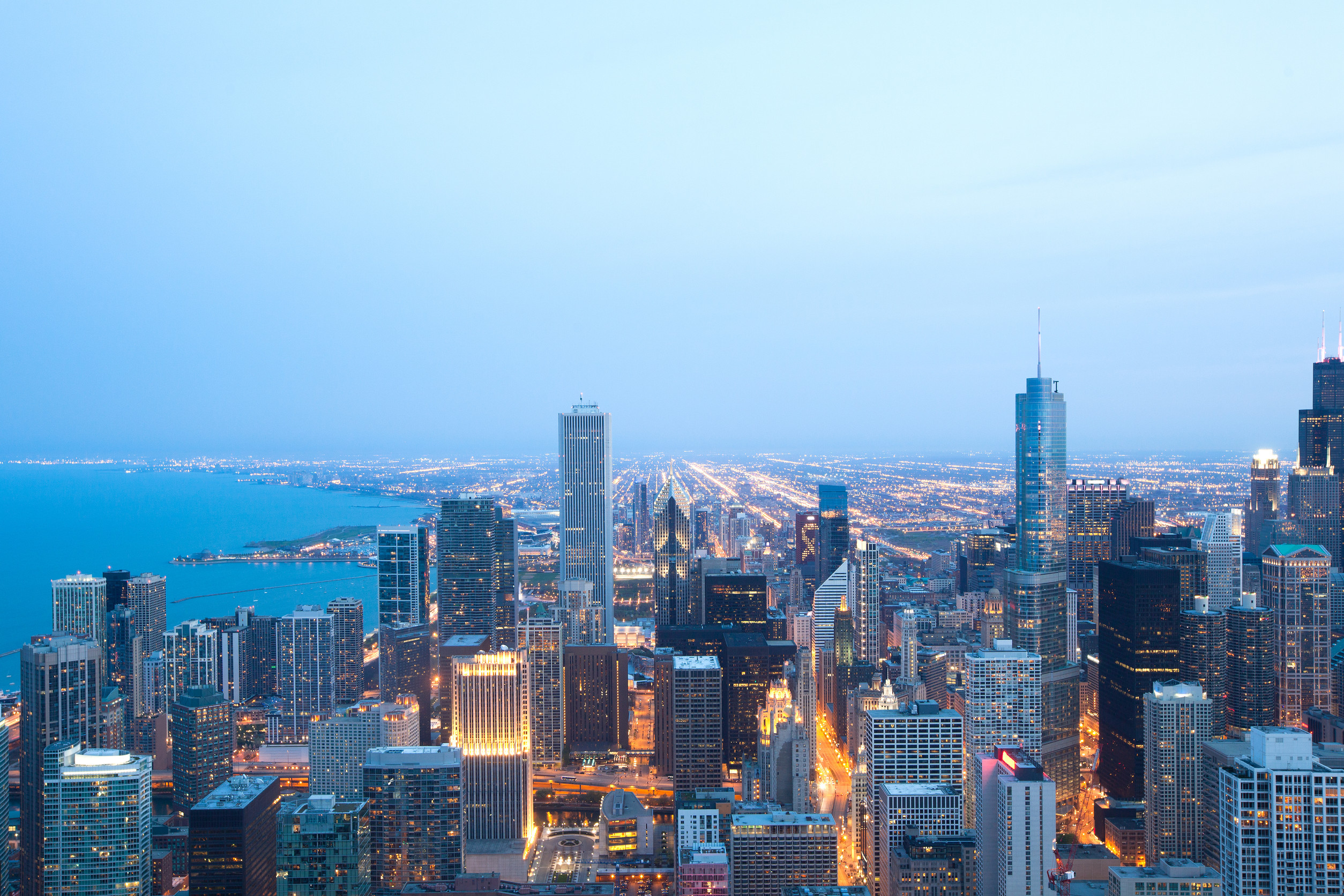photo credit: Shutterstock
By Optimist Daily Editorial Team
Youth activism is proving a promising channel for authentic, positive change in our world today. Anthony J. Nocella II, the National Coordinator for the Save the Kids Foundation has worked with young people for years and is an expert on the realms of peace and conflict studies.
Nocella explains that peace education is valuable because it provides students with the knowledge necessary to enact many methods of activism, from fighting oppression to fighting violence. He argues that discussions on social change within schools is vital because they are “microcosms of how society acts”.
In recent months, passionate young activists have been repeatedly in the news, generating action for change. Greta Thunberg initiated the international “school strike for the climate” last year, at age 15. The Sunrise Movement is an army of young people passionately forcing climate change to become a priority in American politics. The March for Our Lives in 2018 was one of the largest protests in American history, a student-led demonstration encouraging preventative legislation against gun violence in the US that spread across the world.
From youth activism to creating peace in our lifetimes, from current movements to what he wants to teach our world today, we reached back out to Anthony and asked him to discuss what has changed in the past five years and what to expect for the future. Read on for our conversation!
The Optimist Daily: The rise of youth activists has really taken off recently. Considering Greta Thunberg, the Sunrise Movement and the Parkland Survivors’ March for Our Lives, how do you react to these youth-led movements?
Anthony Nocella: Youth activism and social movements have been growing with the rise of social media and youth having access to smartphones, these amazingly complex devices that can do massive amounts of work quicker than was ever possible before. Beyond transferring data via social media and other news media, smartphones can scan barcodes, transfer money, download documents, and get directions to any place on the planet. Goodbye to the need for offices, maps, computers, desks, credit card readers, copy machines, and hello to a small, portable device, the smartphone.
TOD: Do you think these kids might have been inspired by teachers like you that teach peace education and methods of activism in classroom settings?
AN: Yes, students are often inspired by their mentors, parents, and teachers, who share new experiences with their students and introduce them to new ideas through books, films, presenters, events, and field trips. Many student-led social movements were influenced by professors and teachers, such as Angela Davis and her professor Herbert Marcuse.
TOD: Do you think they have a chance to make a difference?
AN: They already have made a difference just by igniting the conversation around gun control. When people define what “making a difference” is, it should not be measured in laws passed or projects accomplished but through those educated about an issue that they did not know about before. Education is the foundation of social change, but at the societal level, it is hard to measure objectively. This is the reason that many nonprofits have moved away from education campaigns because they are intangible and therefore not easily publicized to show success, which is key for fundraising. Many nonprofits have shifted their focus towards chasing money rather than their goal and mission. This movement of nonprofits is commonly referred to as the nonprofit industrial complex, where people and organizations are chasing after problems to make money, rather than solve them. Social justice change through social movements occurs if power is maintained in at least one of the following forms: people power, favorable facts and truths, social capital or status, physical violence, and political or economic leverage.
TOD: Since we last spoke, the world appears to have shifted in a less “peaceful” direction. Then, you described peace as the absence of harm, violence, and oppression, with oppression being systemic, violence the extreme, and harm as interpersonal. You then stated that hope and optimism are needed in order for our vision of a utopian state of being to become reality. Do you still hold out hope that we can create peace in our lifetimes?
AN: The violence in the world and the United States has not increased per capita in the last four decades, but of course it has increased in number, simply because there are more people on the planet. The difference is also the fact that violence is publicized easier today than ever before, because of the use of smartphones allowing for users to record, live stream, take photos, voice record, edit images and video, and share the information via social media, text, e-mail, website, news media, and politicians. Violence in the past existed such as slavery, genocide, mass murder, terrorism, war, rape, sexual assault, kidnapping, and state-sponsored murder and torture are all forms of violence that existed in the past [and continue today]. But I believe that the use of technology provides more justice to people and communities and so limits the amount of violence too.
TOD: The rapper Nipsey Hussle’s sad and untimely death sparked new peace discussions among gang leaders in LA — and brought various communities together in a way that hasn’t happened since 1992. Some “peace activists” there are calling for a revival and expansion of the community movements that helped curb inner-city violence back in the ’90s & 2000s. How would you advise these community activists to make a lasting and profound change?
AN: To end social violence like gang violence, the solution is not more laws, mass arrests, and surveillance. Society instead must examine systemic forms of oppression such as sexism, classism, racism, ageism, homophobia, transphobia, ableism, and statism. This means letting the initiatives, projects, and programs are led by those in the community and supported by those from the government. Further, there should be mass public free education in society on the root cause of social violence–in this case, racism and classism.
TOD: California also just put a moratorium on the Death Penalty, largely in response to ongoing activism related to human rights and the inequality of incarceration — how do you react to this change?
AN: We have entered a time in the US where politicians and society are slowly moving away from punitive justice and more towards community-based alternatives. This generation does not have the mentality that “hard on crime” campaigns and punishment will solve social problems. This is evident through more books, conferences, and organizations that are ground in transformative and restorative justice coming out today than those focused on punitive justice. Case in point, Save the Kids has a “National Week of Action Against Incarcerating Youth” the week of May 17, 2019. While the US is moving in the direction of incarcerating less youth, Save the Kids wants to promote alternatives to incarcerating NO youth at all. These alternatives include wrap-around programs, life skills classes, anger management, conflict transformation workshops, sports programs, volunteering, youth advocates, service learning, rehabilitation, psychiatric support, expressive education, and transformative justice.
TOD: What’s animating you in this current moment? That is, what are you most interested in teaching/learning/inspiring the world about?
AN: Currently I am working on publishing two books on anarchist criminology, Classic Writings in Anarchist Criminology: A Historical Dismantling of Punishment and Domination, which will be published by AK Press and was just published in April. From the book back cover:
“Anarchists were among the earliest modern thinkers to offer a systemic critique of criminal justice and among the first to directly criticize academic criminology while formulating a critical criminology. They identified the sources of social problems in social structures and relations of inequality and recognized that the institutions preferred by mainstream criminologists as would-be solutions to social problems were actually the causes or enablers of those harms in the first place. This volume collects critical writings on criminology from activists and philosophers like William Godwin, Pierre-Joseph Proudhon, Mikhail Bakunin, Peter Kropotkin, Lucy Parsons, Emma Goldman, and many others.”
The other book, Contemporary Anarchist Criminology: Against Authoritarianism and Punishment, was published last year by Peter Lang Publishing. From the book back cover:
“Contemporary Anarchist Criminology offers a cutting-edge critical assessment of criminology by creating provocative discussions regarding business as usual in the criminal justice system. This exciting interdisciplinary book explores a diversity of topics that range from the construction of criminal law to Lombroso, to deviant behavior, to prison abolition, to transformative justice, to restorative justice, to environmental justice, and to the prison industrial complex. Contemporary Anarchist Criminology is a must-read book for anyone looking for a serious critique of the criminal justice system, specifically for those in sociology, political science, criminology, peace and conflict studies, and criminal justice. Contemporary Anarchist Criminology is not for the timid, but for those wanting to challenge and dismantle the current forms of domination, oppression, and injustice that frame and define the current system of justice.”
I am not sure what the topic of my next book of anarchist criminology will be, but I am interested in discussing alternatives to punitive justice and how to build justice with communities specifically around transformative justice. Specifically, I want to work on a book that will challenge dogmatic political organizing. As schools adopt standardization education and activists become more exclusive and principled with their politics, there is no room in society to develop dialogue and understanding. To create social change, one needs to network and communicate with those that are the opposition. This is the case in all wars and in resolving any conflict or dispute. Hence, those involved must meet and work together to address harm, take accountability, and heal.
More About Anthony Nocella
 Anthony J. Nocella II, Ph.D., international award-winning author, professor and public intellectual in the areas of criminology, sociology, juvenile justice, social justice, and environmental justice, is Editor of the Peace Studies Journal, Executive Director of the Institute for Critical Animal Studies, and National Co-Coordinator of Save the Kids. Dr. Nocella II is an Assistant Professor in the Institute of Public Safety at Salt Lake Community College. He is the Co-editor of the Critical Animal Studies and Theory book series with Lexington Books and Editor of the Radical Animal Studies and Total Liberation book series with Peter Lang books. Nocella is also the director of the Academy for Peace Education. Nocella works in the fields of education, justice, criminology, policy, and peace and conflict studies. He is internationally known for his innovative, transformative, and intersectional collaborations among fields of study, organizations, scholars, and communities.
Anthony J. Nocella II, Ph.D., international award-winning author, professor and public intellectual in the areas of criminology, sociology, juvenile justice, social justice, and environmental justice, is Editor of the Peace Studies Journal, Executive Director of the Institute for Critical Animal Studies, and National Co-Coordinator of Save the Kids. Dr. Nocella II is an Assistant Professor in the Institute of Public Safety at Salt Lake Community College. He is the Co-editor of the Critical Animal Studies and Theory book series with Lexington Books and Editor of the Radical Animal Studies and Total Liberation book series with Peter Lang books. Nocella is also the director of the Academy for Peace Education. Nocella works in the fields of education, justice, criminology, policy, and peace and conflict studies. He is internationally known for his innovative, transformative, and intersectional collaborations among fields of study, organizations, scholars, and communities.
Dr. Nocella has published more than fifty scholarly articles or book chapters and over forty books with over fifteen different publishers. His work has been translated in Spanish, Russian, German, Portuguese, Chinese, Japanese, and Korean. He co-founded more than ten active socio-political organizations and serves on four boards. He has co-founded four journals – Transformative Justice Journal, Green Theory and Praxis, Peace Studies Journal, and Journal of Critical Animal Studies is on the editorial board of three other journals and has published more than twenty books.
Dr. Nocella has guest lectured, provided professional development trainings, and facilitated workshops to hundreds of school districts, universities, colleges, high schools, middle schools and many prisons, jails, and detention facilities around the Americas, such as Onondaga County School District, St. Cloud School District, Hillbrook Youth Detention Facility, Auburn Prison, Attica Prison, Five Points Prison, Environmental Protection Agency, Brock University, UCLA, Hofstra University, New York University Law School, Rutgers University Law School, Boston College, University of Pennsylvania, Haverford College, Swarthmore College, University of Texas, Yale University, and Princeton University.
To read an earlier interview the Optimist Daily team did with Anthony in 2014, click here to read The Activist Guidebook You Never Knew You Needed
Find out more about Nocella’s group, Save the Kids, at savethekidsgroup.org.












